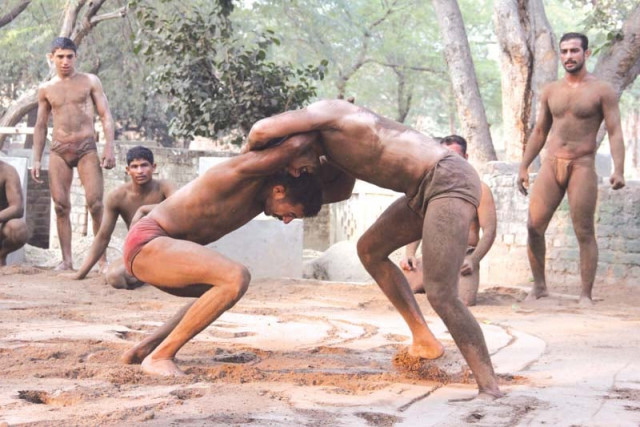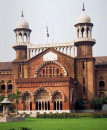Mud wrestling: Reviving a dying art in a cemetery
25 wrestlers train at Shahid Pehlwan’s akhara located in Mughalpura cemetery.

Wrestlers train at Shahid Pehlwan’s akhara in Mughalpura. PHOTOS: AYESHA MIR/EXPRESS
They do push-ups and lift wooden blocks. These are the pehlwans—wrestlers—of Baghbanpura. Their akhara is known as Shahid Pehlwan’s Akhara. The akhara has been functional for over 50 years.

“It is our nursery. I was only 12 when my father brought me here to be trained under the supervision of Ustad Yaqoob Armywala Pehlwan,” says 36-year-old Shahid Khoyewala Pehlwan. Today, he is himself training 25 disciples. “All wrestlers from the city are welcome here. There is no membership fee or training charge,” he says.
The boys come to the arena at 2pm and practice their skills till dusk. They dig up the earth to make it soft before starting the practice session and apply oil to their bodies. All the wrestlers take part in the digging and later in the cleaning.
“If you want to become a good wrestler, you have to respect the akhara. Those who do not respect the soil get hurt during the practice,” he says.

Wrestlers train at Shahid Pehlwan’s akhara in Mughalpura. PHOTOS: AYESHA MIR/EXPRESS
The wrestlers keep their things in a Mughal-era bara dari, built using small baked bricks. Most of the bricks have been blackened by smoke from bushfires lit by successive watchmen during winter nights. “It was originally open on all four sides. Later, people closed three sides, turning it into a room,” says Muhammad Hanif, who serves as the watchman and caretaker.
“Our most famous pehlwan is Shahid, who held the Sher-i-Punjab title from 2009 to 2011. Earlier, Yaqoob Armywala remained national champion for 18 years. The rising star wrestler is Qaiser Hero,” Shahid says.
Shahid says his is not the only akhara located at a graveyard. “There are four others in the city. We have never had any problem with people visiting the graveyard,” Shahid says, they do not exercise on Thursdays.
Muhammad Aslam, 85, is the khaleefa— coach’s deputy. “There used to be 11 such grounds in the city. However, the others closed down once the youth lost interest in traditional wrestling,” Aslam says.
“Javed Pehlwan’s akhara still operates at the Singhpura graveyard, Ustad Juru Balla’s in Miran Hussain graveyard on Ghoray Shah Road, Jara Pehlwan’s in Pir Makki and Ikram Pehlwan’s in a graveyard near Data Darbar,” he says. “The government has never provided a proper akhara. That is why the boys are forced to work out at graveyards,” Aslam says.
“All we need is a 60-foot tract of land with some shade,” Shahid says. “Our wrestlers fail to win laurels at international events because the rules and dimension of our akharas are different. Our boys train on loose earth. They fail to do as well on wrestling mats,” says Shahid.
Qaiser Hero says wrestling is an expensive sport. “A wrestler needs to spend at least Rs2,000 a day on his food. I consume three litres of milk, three kgs fruits, one kg meat and two kg almonds besides some butter every day,” he says. “We never use steroids or performance enhancing drugs. That is why our bodies survive ageing,” he claims. “A wrestler needs at least five years to learn the game. He has to start at an early age,” he says.
Wrestlers from the akhara face other wrestlers in matches at the Punjab Stadium. They require the coach’s permission to compete. Shahid says has stopped his second-best athlete Fayyaz Pehlwan from taking part in any dangal for two years. “Fayyaz won two competitions early in his career and is unbeaten, but he needs more training before I allow him to compete again,” says Shahid.
Published in The Express Tribune, April 7th, 2015.



















COMMENTS
Comments are moderated and generally will be posted if they are on-topic and not abusive.
For more information, please see our Comments FAQ